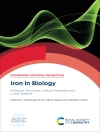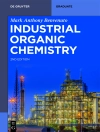The handbook comprehensively covers the field of inorganic photochemistry from the fundamentals to the main applications.
The first section of the book describes the historical development of inorganic photochemistry, along with the fundamentals related to this multidisciplinary scientific field. The main experimental techniques employed in state-of-art studies are described in detail in the second section followed by a third section including theoretical investigations in the field. In the next three sections, the photophysical and photochemical properties of coordination compounds, supramolecular systems and inorganic semiconductors are summarized by experts on these materials. Finally, the application of photoactive inorganic compounds in key sectors of our society is highlighted. The sections cover applications in bioimaging and sensing, drug delivery and cancer therapy, solar energy conversion to electricity and fuels, organic synthesis, environmental remediation and optoelectronics among others.
The chapters provide a concise overview of the main achievements in the recent years and highlight the challenges for future research. This handbook offers a unique compilation for practitioners of inorganic photochemistry in both industry and academia.
Table des matières
Background/Fundaments.- Experimental Techniques (from steady-state to ultrafast methods).- Theoretical modeling.- Homogeneous systems.- Supramolecular systems.- Heterogeneous systems.- Biological Applications.- Photovoltaic Applications.- Applications on solar to fuel conversion.- Applications on organic synthesis.- Applications on environmental remediation.- Inorganic materials for optoelectronics.
A propos de l’auteur
Prof. Dr. rer. nat. habil.
Detlef W. Bahnemann
Institute of Technical Chemistry
Leibniz University Hannover
Hannover, Niedersachsen, Germany
Detlef Bahnemann is Head of the Research Unit “Photocatalysis and Nanotechnology” at Leibniz University Hannover and Director of the Research Institute “Nanocomposite Materials for Photonic Applications” at Saint Petersburg State University. His research topics include photocatalysis, photoelectrochemistry, solar chemistry, and photochemistry focussed on synthesis and physical-chemical properties of semiconductor and metal nanoparticles. His more than 500 publications have been cited 58, 000 times (h-index: 95). He is Visiting Research Professor at Queens University Belfast, De Tao Master of Photocatalysis, Nanomaterials, and Energy Applications, and holds a Guest Professorship at Tianjin University (China) several visiting professorships in China, Malaysia, Saudi Arabia, and Britain.
Prof. Antonio Otavio T. Patrocinio
Laboratory of Photochemistry and Materials Science
Institute of Chemistry
Federal University of Uberlandia
Uberlandia, Brazil
Antonio Otavio T. Patrocinio received his BS degree from the Universidade Federal de Ouro Preto, Brazil (2001) and his Ph D from Universidade de São Paulo, Brazil (2009) with a sandwich period at the University of North Carolina at Chapel Hill (2008). He spent 1 year as a postdoctoral fellow at Universidade de Sao Paulo (2010), and in 2011, he moved to the Institute of Chemistry of Universidade Federal de Uberlandia, Brazil, as Assistant Professor. In 2012, he was honored by the German Federal Ministry of Education and Research (BMBF) with the Green Talents Award for his research contributions in sustainable growth and renewable energy. Between 2016 and 2018, he visited the Institut für Technische Chemie of Gottfried Wilhelm Leibniz Universität Hannover as an Alexander von Humboldt research fellow. He is currently an Associate Professor at Universidade Federal de Uberlandia and Head of the Laboratory of Photochemistry and Materials Science, where he investigates nanostructured metal oxide-based thin films and photochemical properties of coordination compounds for solar energy conversion.












